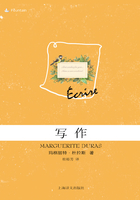The Roman distinction between the Law of Persons and the Lawof Things, which though extremely convenient is entirelyartificial, has evidently done much to divert inquiry on thesubject before us from the true direction. The lessons learned indiscussing the Jus Personarum have been forgotten where the JusRerum is reached, and Property, Contract, and Delict, have beenconsidered as if no hints concerning their original nature wereto be gained from the facts ascertained respecting the originalcondition of Persons. The futility of this method would bemanifest if a system of pure archaic law could be brought beforeus, and if the experiment could be tried of applying to it theRoman classifications. It would soon be seen that the separationof the Law of Persons from that of Things has no meaning in theinfancy of law, that the rules belonging to the two departmentsare inextricably mingled together, and that the distinctions ofthe later jurists are appropriate only to the laterjurisprudence. From what has been said in the earlier portions ofthis treatise, it will be gathered that there is a strong apriori improbability of our obtaining any clue to the earlyhistory of property, if we confine our notice to the proprietaryrights of individuals. It is more than likely thatjoint-ownership, and not separate ownership, is the reallyarchaic institution, and that the forms of property which willafford us instruction will be those which are associated with therights of families and of groups of kindred. The Romanjurisprudence will not here assist in enlightening us, for it isexactly the Roman jurisprudence which, transformed by the theoryof Natural Law, has bequeathed to the moderns the impression thatindividual ownership is the normal state of proprietary right,and that ownership in common by groups of men is only theexception to a general rule. There is, however, one communitywhich will always be carefully examined by the inquirer who is inquest of any lost institution of primeval society. How far soeverany such institution may have undergone change among the branchof the Indo-European family which has been settled for ages inIndia, it will seldom be found to have entirely cast aside theshell in which it was originally reared. It happens that, amongthe Hindoos, we do find a form of ownership which ought at onceto rivet our attention from its exactly fitting in with the ideaswhich our studies in the Law of Persons would lead us toentertain respecting the original condition of property. TheVillage Community of India is at once an organised patriarchalsociety and an assemblage of co-proprietors. The personalrelations to each other of the men who compose it areindistinguishably confounded with their proprietary rights, andto the attempts of English functionaries to separate the two maybe assigned some of the most formidable miscarriages ofAnglo-Indian administration. The Village Community is known to beof immense antiquity. In whatever direction research has beenpushed into Indian history, general or local, it has always foundthe Community in existence at the farthest point of its progress.
A great number of intelligent and observant writers, most of whomhad no theory of any sort to support concerning its nature andorigin, agree in considering it the least destructibleinstitution of a society which never willingly surrenders any oneof its usages to innovation. Conquests and revolutions seem tohave swept over it without disturbing or displacing it, and themost beneficent systems of government in India have always beenthose which have recognised it as the basis of administration.
The mature Roman law, and modern jurisprudence following inits wake, look upon co-ownership as an exceptional and momentarycondition of the rights of property. This view is clearlyindicated in the maxim which obtains universally in WesternEurope, Nemo in communione potest invitus detineri ("No one canbe kept in co-proprietorship against his will"). But in Indiathis order of ideas is reversed, and it may be said that separateproprietorship is always on its way to become proprietorship incommon. The process has been adverted to already. As soon as ason is born, he acquires a vested interest in his father'ssubstance, and on attaining years of discretion he is even, incertain contingencies, permitted by the letter of the law to callfor a partition of the family estate. As a fact, however, adivision rarely takes place even at the death of the father, andthe property constantly remains undivided for severalgenerations, though every member of every generation has a legalright to an undivided share in it. The domain thus held in commonis sometimes administered by an elected manager, but moregenerally, and in some provinces always, it is managed by theeldest agnate, by the eldest representative of the eldest line ofthe stock. Such an assemblage of joint proprietors, a body ofkindred holding a domain in common, is the simplest form of anIndian Village Community, but the Community is more than abrotherhood of relatives and more than an association ofpartners. It is an organized society, and besides providing forthe management of the common fund, it seldom fails to provide, bya complete staff of functionaries, for internal government, forpolice, for the administration of justice, and for theapportionment of taxes and public duties.















